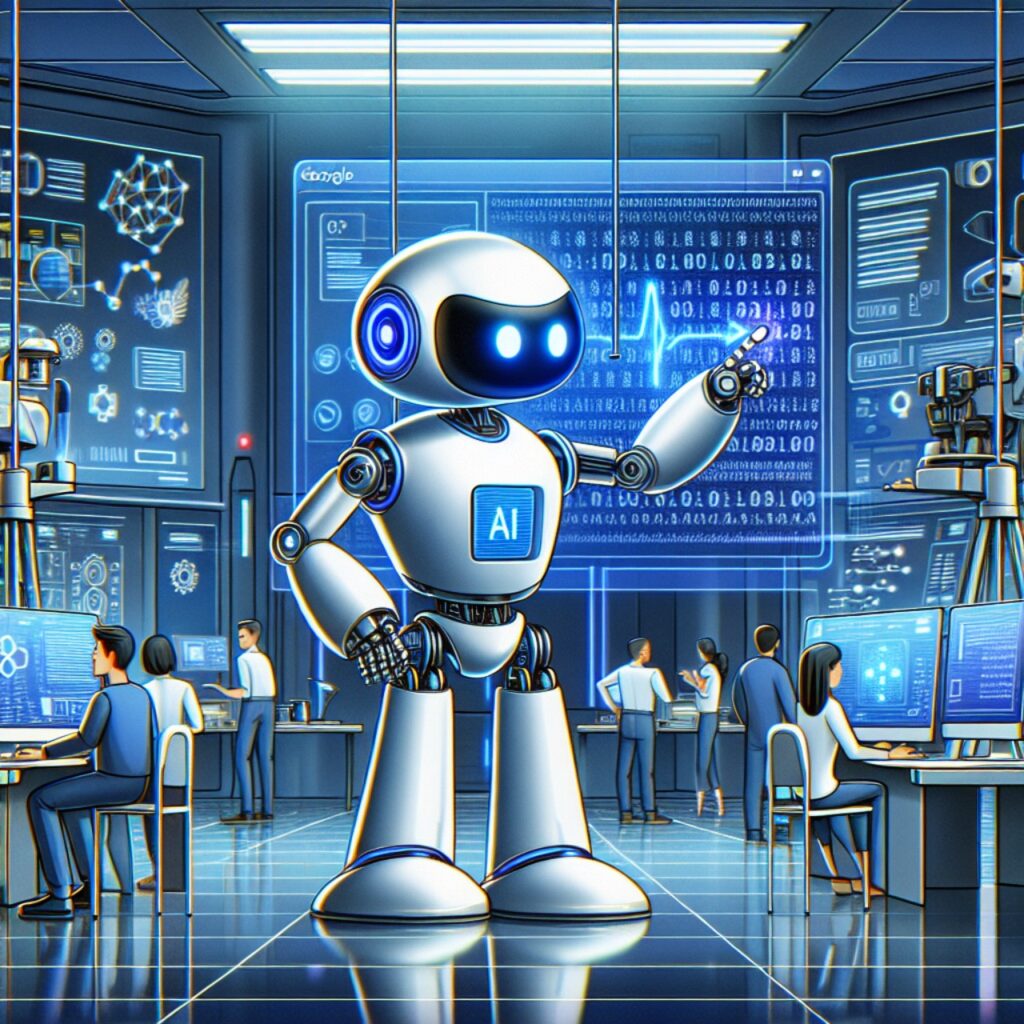There’s a lot more going on behind the scenes, despite doubters’ claims that the AI revolution is only about chatbots and bizarre, if weird, digital artwork production. Google’s AI-powered robots recently provided a lovely demonstration of the full potential of the technology. Several very different-looking robots are exploring Google’s DeepMind AI division’s hallways as part of a research study, busying themselves with learning how to find their way about and interacting with workers that work there. When the devices that could comprise an impending robot revolution are employed in our homes, industries, and offices—in their millions and billions, according to some well-known futurists—the experiment offers us a tantalizing peek of what they will be able to accomplish.
According to a research article, Google has been looking at “Multimodal Instruction Navigation with Long-Context VLMs and Topological Graphs.” Behind the technical language, it all comes down to employing AI to navigate Google’s offices and engage with humans via “long context” suggestions. The lengthy context bit is critical; it refers to how much information the AI model, Gemini 1.5 Pro, can take in and interpret in a single input session using natural language. Essentially, it is about providing the robot with context so that it can remember many information about its interactions with people, including what they have said or asked the robot to do. Consider how you ask a simple AI, such as Amazon’s Alexa, only to discover that she has “forgotten” the question and is unable to carry on a human-like conversation–this is one of the issues addressed by the Google project.
According to the report, Google provides some instances of how the AI-powered robots perform in the workplace in project documentation films. In one scenario, the user asks the robots to send him somewhere where he can draw something. The robot responds by directing the Googler to a whiteboard by matching the user’s request with its knowledge of the locations of objects that can be drawn on.
This may seem straightforward, but it represents a higher order of thinking that is far closer to human thought than many previous AI/robot systems have been able to achieve. Once again, Alexa is a fantastic example to use: she is intelligent, but she can only understand very narrow commands. If you have used Alexa’s natural language system, you have probably faced her extremely limited reasoning when she complains that she doesn’t understand, unless you change the way you phrase it.
Teaching the robots about the environment they would be exploring was another aspect of the Google project. The new Google robots were trained by having their AI “watch” a walkthrough video created on a smartphone, as opposed to earlier robot systems that may have been trained using extremely precise input maps of office or factory floors, or even being initially tele-operated around the space by a human so their sensors learn the layout of their surroundings. The movie demonstrated how the artificial intelligence (AI) bot could recognize things, such as electrical outlets or furniture, remember their locations, and deduce what a user intended when they asked the robot to assist them in charging their smartphone, for example. Or, to show off their even greater intelligence, they recognized what to do when a user requested more of “this,” gesturing to soda cans sitting on their desk, and realized it was appropriate to go check the workplace refrigerator for supplies.
Google’s project is still an exciting potential preview of things to come, even though the robots in the video look very artificial (it was noted that the machines themselves were actually leftovers from an earlier research project) and there is a noticeable delay issue—up to a minute of “thinking time” between being the robot receiving the request and then acting on it. It corresponds with recent reports that another business, Skild, has secured $300 million to assist in developing an AI brain that can be used by a variety of robots. Additionally, it validates the beliefs of robotic tech enthusiasts such as Elon Musk, Jeff Bezos, and Bill Gates, who are confident that we will soon be able to purchase AI-powered humanoid robots and welcome them into our homes and offices.
However, that has been a yearly commitment since the middle of the 20th century. Do you recall Robbie the Robot? He would have a few witty remarks to make regarding Google’s lanky, slow-thinking robots.








